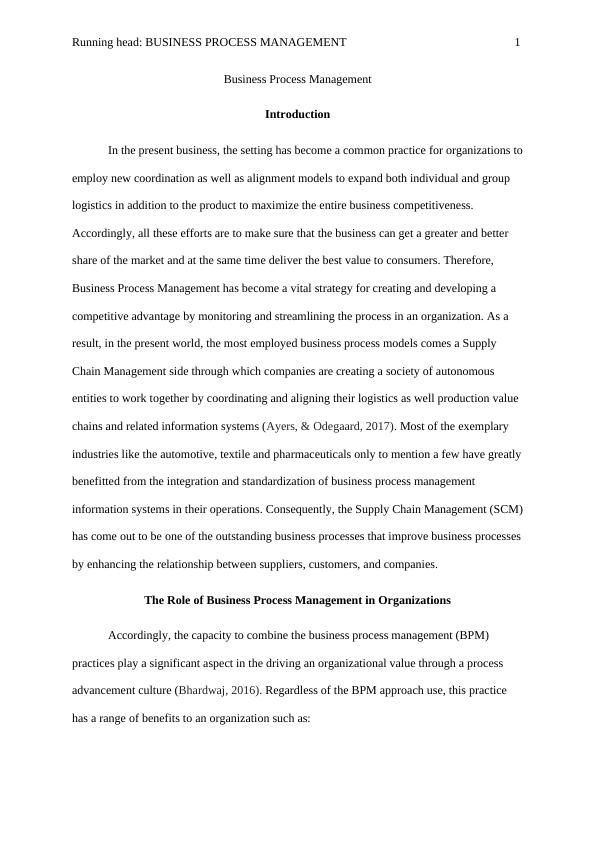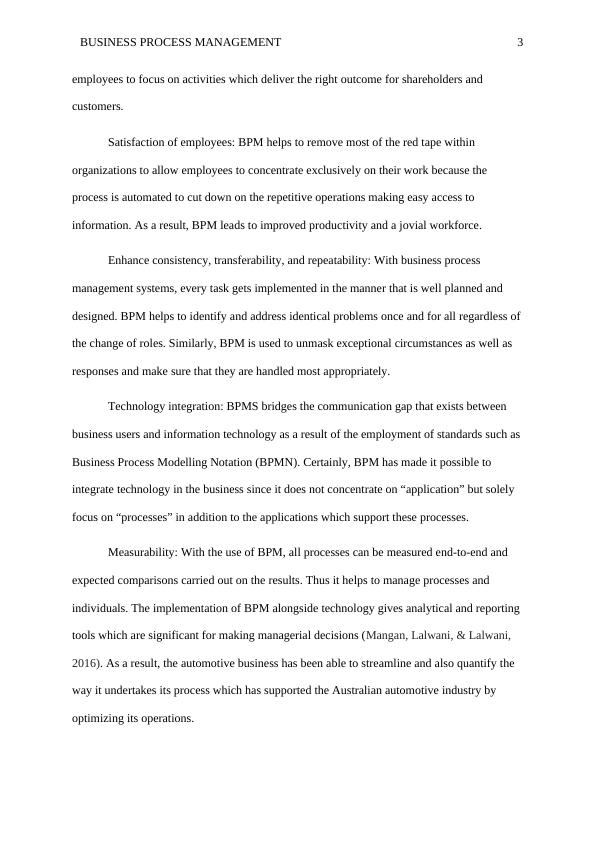Business Process Management: Role, Approaches, and Risks
Develop a business process management plan for a particular case (organisation or project) and submit three parts: Business Process development plan, Business process improvement report, Business process analysis.
7 Pages1684 Words266 Views
Added on 2023-06-10
About This Document
Business Process Management has become a vital strategy for creating and developing a competitive advantage by monitoring and streamlining the process in an organization. Learn about the role of Business Process Management in organizations, its approaches, and the risks associated with its implementation.
Business Process Management: Role, Approaches, and Risks
Develop a business process management plan for a particular case (organisation or project) and submit three parts: Business Process development plan, Business process improvement report, Business process analysis.
Added on 2023-06-10
ShareRelated Documents
End of preview
Want to access all the pages? Upload your documents or become a member.
Enterprise system in Business Process Management report
|9
|1641
|353
Differences and Similarities of ERP and BPMS for Business Process Management
|4
|787
|382
Importance of Business Process Management for Organizations
|10
|2534
|402
DE6101 - Engineering Management - Business Process Management
|4
|760
|51
Business Process Management and IT Management: The Missing Integration
|9
|2247
|1
Business Process Management: Reflection Report and Case Study
|6
|1767
|134



